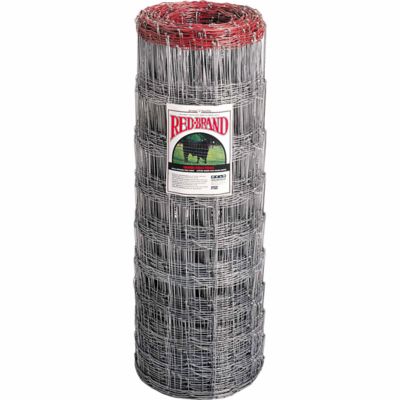Titan Attachments Heavy Duty 60″ Overall 43″ Fork Length Clamp-on Pallet Forks 4000 lbs for Loader Bucket Tractor Bucket or Skidsteer, Easy to Install
The Titan pair of clamp-on pallet forks feature a simple design which slides over the cutting edge of your bucket and clamps down, locking the unit in place.
-
Red Brand Woven Field Fence, 330 ft. L x 47 in. H, 70048 at Tractor Supply Co.
Rated 4.88 out of 516Red Brand Woven Field Fence, 330 ft. L x 47 in. H, 70048 at Tractor Supply Co.
Rated 4.88 out of 516 -
$199.99
$395.00






VERSATILE EQUIPMENT: These pallet forks can be attached over the cutting edge of the bucket of tractors and secured into place with the clamps. This kind of versatility creates an opportunity for you to use it across various brands of tractors, such as the Ford 8n, 9n, Kubota, or John Deere tractors. It’s a great addition to your farm accessories but can also be used to haul building supplies.4,000 LBS CAPACITY: Through superior design, we’ve created our Titan tractor fork attachments to be able to hold weight up to 4,000 pounds. This means that they are able to lift heavy things like fence posts, lumber, pallets, logs, or other parts you need moved around. Simply slide the clamp over the edge of your bucket and lock it in place for a sturdy heavy-lifting solution.ROLL BACK PROTECTION SLOTS: Part of what makes up our professional design is our focus on safety. When you need a quick solution for hauling lumber or a hay bale, you shouldn’t need to sacrifice your, or anyone else’s, safety. Our roll back protection slots can help keep your heavy loads right on the forks where they should be.CHAIN HOLES FOR HEAVY LIFTING: Being able to secure your heavy load onto the forks of your front loader is crucial for both safety and efficiency. As part of our exceptional design, we’ve included chain holes so that you can use chains to secure loads and to act as a stabilizer for heavy equipment or the larger load that you are moving.HEAVY-DUTY MATERIAL: Working with heavy lifting and large loads mean that we had to create something that would be durable. We’ve used a heavy-duty material and expert welding to construct the forks and the thick, rectangular tube walls. The length of each fork is 43” and the fork width is 4”. The total length, once installed, is 60”.



Reviews
There are no reviews yet.